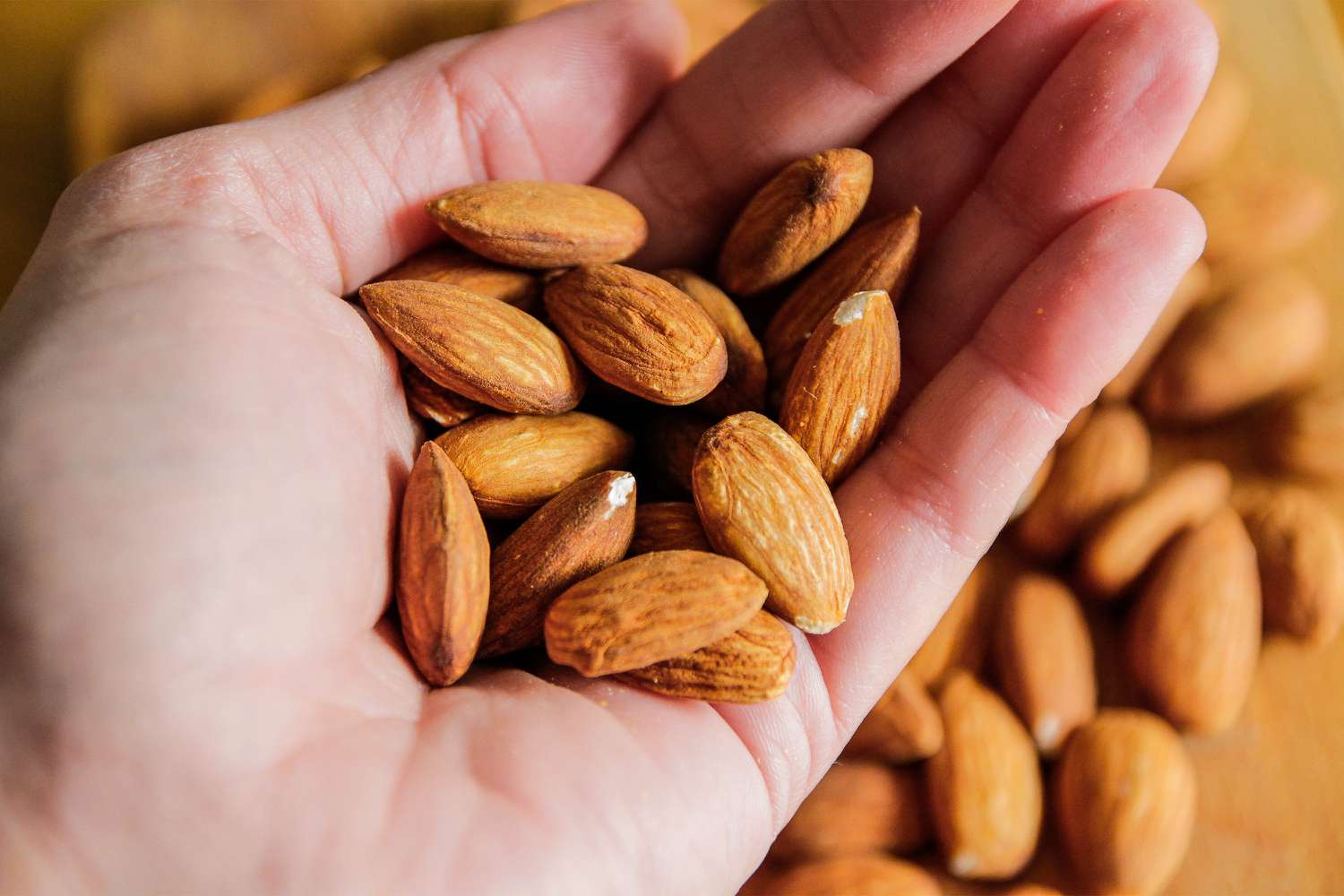"Top 15 Tasty Foods Rich in Vitamin E for a Healthy Diet"

While Vitamin E may not have as much attention as its fellow vitamins such as D and C, it has an important place in human health. As a nutrient that our bodies can't produce on their own, we need to consume it in our diets. Adults 14 and up are advised to consume 15 milligrams per day, according to the 2020-2025 Dietary Guidelines for Americans. It's important to note, however, that Vitamin E supplementation isn't encouraged unless there's a deficiency present.
Connie Elick, MS, RD, a registered dietician teaching plant-based culinary arts at the Institute of Culinary Education in Los Angeles, raises concerns over unnecessary supplementation. It can lead to heart complications, adverse side effects such as nausea and digestive disturbances, harmful interactions with medications, and increased risk of bleeding. Thus, it is recommended that we get Vitamin E from our diets. But, the question is, what foods contain it and what benefits does Vitamin E bring? Here are some useful information and tips on how to prepare the foods rich in Vitamin E.
Vitamin E has antioxidant properties that protect our bodies from the damaging effects of free radicals. It helps prevent oxidative stress, a follow-on factor in the onset of chronic diseases such as cancer and heart disease. Vitamin E also supports the immune system by protecting immune cells. Keeping the membranes of these immune cells healthy, Vitamin E helps reduce the likelihood of infections, Elick further explains.
Another benefit of Vitamin E is its anti-inflammatory properties, which Johanna P. Salazar, MS, RDN, founder of Healing Nutrition explains. Conditions like obesity, type 2 diabetes, non-alcoholic fatty liver disease, and infections can cause inflammation in the body. If a person has low Vitamin E levels, their immune response struggles to combat this inflammation.
As a fat-soluble vitamin, Vitamin E needs fat to be absorbed into the small intestine, Elick explains. A low-fat diet could reduce absorption of Vitamin E and other fat-soluble vitamins such as A, D, and K. Hence, Vitamin E should be consumed with a source of fat like avocados, olive oil, or nuts to maximize nutrient absorption.
Hazelnut oil is a good source of Vitamin E, with 6 milligrams per tablespoon, which is around 40% of the daily recommended intake. According to Kristen Carli, MS, RD, founder of Camelback Nutrition and Wellness, it is ideal for salad dressings.
Despite being small, sunflower seeds are high in Vitamin E. A half-cup serving provides roughly 25 milligrams of Vitamin E. They are great additions to snacks like granola or trail mix and can be used as a topping for salads or mixed in with Greek yogurt.
Collard greens could be a quick source of a small amount of Vitamin E if increased gradually in your diet. They are excellent when steamed, with a touch of olive oil and red wine vinegar, or added to salads, stews, and wraps.
Peanut butter is another versatile source of Vitamin E, with nearly 2 milligrams in every tablespoon. Eating it with celery sticks or apple slices makes a quick snack. You can also add it to smoothies, whole wheat crackers, and sandwiches for a rich, creamy treat.
Dinner ideas can include a quick sauté of asparagus in olive oil, minced garlic, and red chili flakes served with any protein source you prefer; you'll get nearly 2 milligrams of Vitamin E for each cup of asparagus.
High in Vitamin E, almonds offer around 7 milligrams of the nutrient per ounce. Besides, almonds provide plant-based protein and fats that mitigate inflammation and aid Vitamin E absorption. Eat them solo or mix in your oatmeal, pair with dried fruit, or add them to other dishes like chicken or fish.
One cup of raw spinach contains 0.6 milligrams of vitamin E. However, as spinach shrinks considerably when cooked, it’s easy to add multiple cups to soups, stews, and chilis. Want to keep it simple? Salazar suggests blending it into your morning smoothie, adding it to your favorite sandwich, or sautéing the leaves in avocado oil and garlic for a tasty side dish.
To increase your intake of vitamin E, add pumpkin puree to your recipes. One cup of canned pumpkin puree contains nearly 3 milligrams of the nutrient. “Stir pumpkin puree into applesauce or make it into a [creamy] soup,” Elick suggests. It also makes for a delicious seasonal smoothie when blended with bananas, yogurt, cinnamon, and milk of your choice.
The next time you’re craving a savory snack, Carli suggests enjoying sweet red bell pepper with Greek yogurt mixed with ranch seasoning. The combo is crunchy and satisfying and provides vitamin E, with nearly 2 milligrams per medium pepper.
In case you need another reason to love avocado toast, the green fruit is a source of vitamin E — one avocado contains about 4 milligrams of the nutrient. You also can’t go wrong with guacamole with pita chips, celery, or carrot sticks, Salazar says.
With minimal effort and ingredients, you can transform salmon — which provides 3 milligrams of vitamin E per 3-ounce serving — into a mouthwatering meal. Try broiling the fish with a marinade of maple syrup, sriracha, and lime juice, as recommended by Carli, and serve it with pasta or brown rice and your favorite veggie.
A staple ingredient in pesto, pine nuts contain nearly 2 milligrams of vitamin E per 1-ounce serving. Salazar says they’re perfect for elevating savory dishes, such as sautéd green beans. They also make a yummy addition to salads. Arugula with parmesan and pine nuts is a classic combo for a reason — it's really delicious.
The next time you buy beets, you’ll want to hold on to those greens, which contain 0.5 milligrams of vitamin E per cup. Use beet greens just as you would any other leafy vegetable; toss them in salads, sauté them with olive oil as a side dish, or bake them to enjoy as green “chips,” says Elick.
One tablespoon of wheat germ oil contains a whopping 20 milligrams of vitamin E — more than a day’s worth. However, heat may reduce it's nutritional content, so you’ll want to use it cold or in uncooked dishes. For example, add it to your next homemade salad dressing or drizzle it on pasta after it’s cooled down a bit. Elick also suggests adding wheat germ oil to your favorite smoothie, where it will add an earthy and nutty flavor.
Equal parts juicy and sweet, mango is another food rich in vitamin E. The tropical fruit offers about 3 milligrams per fruit, according to data from the USDA. “Slice the mango, freeze it, and enjoy it as a healthy sweet on a hot day,” suggests Elick. Or if you love the combo of sweet and savory, “make a mango, avocado, and chicken salad with lemon juice, cucumber, and green onion,” Elick says.
As a potent antioxidant, vitamin E is an essential nutrient that’s needed for optimal health. It helps protect cells from oxidative damage, reduces inflammation, and supports immune function.
The vitamin is found in a wide range of foods, including hazelnut oil, avocado, spinach, salmon, and pumpkin puree, making it easy to incorporate into your diet as part of a healthy and balanced lifestyle.




